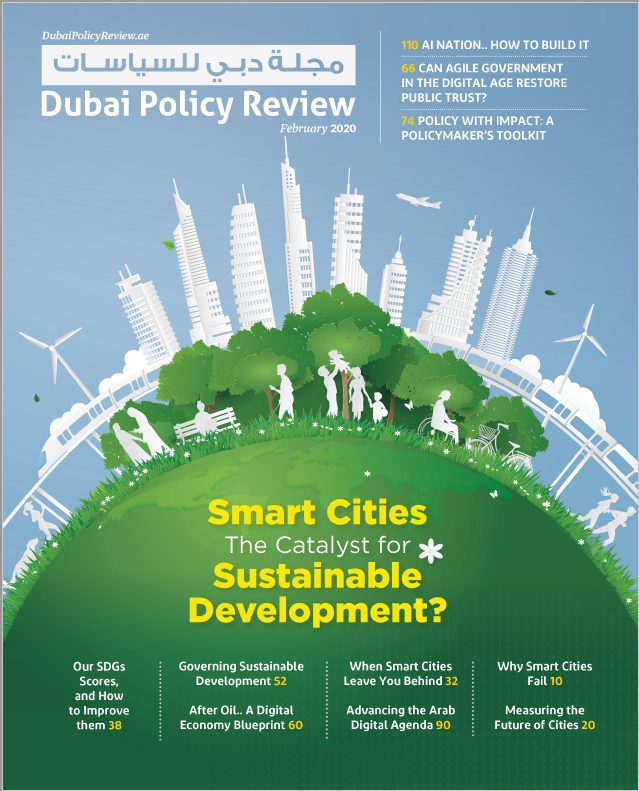Throughout democratic history, encouraging participation in the administration of government has been a challenge, one that 21st century technologies can help to address, particularly as public participation becomes a benchmark for legitimacy and effective social organization. Digital tools and data analysis are particularly useful, as they offer the opportunities for shaping modes of participation that address specific challenges.
Governments urgently need to revisit their understanding of participatory techniques. Every public servant needs to understand and master the tools at their disposal and experiment and innovate ways to engage the public in the work of government.
Digital Participation as a Panacea? Some European Experiments:
Several European Union governments have engaged in participative experiments that have affected public policy over the last two decades. This article draws on these experiments to highlight opportunities for advancement that can be applied in other jurisdictions and countries.
To clearly understand what these experiments have achieved, a definition of public participation is useful: participation here means the involvement of interested parties in policy processes beyond the requirements of constitutional and administrative rules and procedures. It is not about ‘democracy’, as defined in any specific historic setting, but is a necessary part of any social system, democratic or other.
These experiments have identified five actionable propositions that can be summarised as follows:
- An administration that extends participation beyond the minimum legal requirement earns trust and eases the path to its goals;
- Recent European history shows that this is not a practice area that depends absolutely on digital tools, but rather a combination of real life interaction facilitated by digital tools;
- Social media tools have ushered a new era in public sector engagement, first for the engagement of colleagues, and from there the public;
- Social media also makes it possible to systematically involve citizens in many more aspects of public life, alerting them to changes, new events, or even requesting input;
- Leading the digital participation revolution is one "Next Big Thing" for the public sector everywhere, and need not require a top-down mega-mandate to succeed.
History: trade, transparency and legitimacy.
There are many clear examples from pre-21st century history that point to participation as a practice to which human society responds positively. Even within the European sphere, participation beyond the requirements of the rules has its roots in earlier experiments. Chief among those examples was the GATT Uruguay Round (1986-93), which created the World Trade Organisation (WTO) and opened up global rules on services, investment and IP for the first time.
In launching that process, the European Commission had a fight on its hands with those Member States who harboured doubts about the endeavour, and who mistrusted the Commission negotiators. The negotiators (without seeking formal clearance from headquarters) broke the conspiracy theory by bringing one Member State (the UK) into the closed meetings, not to negotiate, but simply to observe, and to act as a guarantor of the truthfulness of subsequent reports back to the Member States as a whole.
The WTO came into being in 1994, but it did so at a time when the fairness of the global economic process began to come under fire, from trades unions, environmental NGOs, consumer lobbies and others. As the liberalising process continued across the end of the century, both within the WTO and in regional or bilateral talks, the Commission responded to these doubts by continuing to experiment with participative techniques to validate the sustainability (in social, environmental and economic terms) of the intended trade liberalisation goals1.
The EU therefore not only created a technocratic tool, the Sustainability Impact Assessment (SIA), but embedded it within a ‘Civil Society Dialogue’. The Dialogues, like the SIAs have survived and flourished to this day. They involve ‘all interested parties’, (civil society and for-profit and experts) in the validation of the scope of each SIA, and in deliberations about the policy implications of the assessment.
Such innovations have stood the test of time. They have not removed all political crisis from EU trade liberalisation, but arguably, if the spirit of these experiments had been respected in subsequent talks, much EU angst could have been avoided2.
History: 2001, a Governance Odyssey.
In addition to challenges experienced by its trade liberalisation efforts, the EU journey to its present state has not been smooth or easy. In the wake of a crisis that terminated the mandate of a whole College of Commissioners, the EU executive team of the successor President, Romano Prodi, published3 its first free-standing prescription for effective but also legitimate administration, which included an invitation to participation.
The Governance White Paper’s five key principles stand as a benchmark for current EU administrative quality:
- Openness
- Effectiveness
- Coherence
- Accountability
- Participation
In today’s innovation storm, recent EU Commission suggestions4 are that a good administration will also be pursuing four more challenging change goals:
Open Attitudes: governments need to embrace change. To import an entrepreneurial mind-set. To dare to be creative in the face of crisis, to experiment across a range of risk-taking ideas, not picking winners but letting losers go. To favour outcomes over rules, response to changing reality over following the plan.
Engagement inside: to get there, public service managers must make the engagement and development of people their top priority. Engagement requires a sense of purpose, of mastery and of autonomy. With this, public service can be filled with passionate, self-starting creatives rather than merely obedient and diligent experts. They in turn will be credible convenors of participative policy-making. There are always blockers to confront on such a change journey, but a quick and low-cost culture audit can help to use the positive culture-shapers, to win the trust of the majority and to circumvent opposition.
Engagement outside: allowing outside parties in is the most crucial and challenging step. To make data easy to understand and explore. To share in problem analysis, to co-design possible initiatives, to test prototypes.
Tools: Tools to connect civil servants among themselves, citizens among themselves and both groups with each other. Tools to offer everyone horizon-scanning, foresight and data-driven knowledge, and to enable future scenarios to be explored iteratively in credible models and in Policy Laboratories. Most radically, public tools to help communities find solutions for themselves, without waiting for top-down prescription.
A new two-way street: participatory digital tools inside administrations and beyond.
Digital tools have provided unprecedented opportunities for engagement in the work of administration. They enable government to consult the public, ask about opinions, beliefs and preferences or even for data, knowledge and evidence. Digital social media, for one, offers answers to the twin challenge of engaging with members of public administration, as well as with members of the public they serve.
In the early days of social media, it was a frequent experience, in the context of EU public health and consumer policy, that civil society and some academic stakeholders would use only a senior official’s Facebook page as a channel to connect. In their fields of work, this was a stigma-free means of communicating. Whereas the use of an official e-mail address seemed to some to be too close a means of collaboration, and to others to make too formal a contact, a Facebook approach required no sanction within their own organisation.
It was also true from those early days that one encountered on Facebook and later on Twitter, and now on a series of sites, an openness of exchange, including with other public servants, that was not always the norm in more familiar settings. Certainly, even in the pioneer days, regular social media activity brought a sense of situational awareness that was unmatched by those relying on their narrower and more homogeneous groups of "usual suspects"5, on print and over-the-air media or on the face-to-face conversation alone. Encouraging public servants, therefore, to experiment with new emerging technologies, now has a strong precedent in creating successful engagement internally among various departments, and externally with the public it serves.
Participation and change within administrations: how to do it?
A decade and more later, deciding when and how to deploy social media tools for public participation remains an issue for many governments. Even when used successfully, social tools present a non-trivial challenge for change management. Even the most digitally literate segments of the administration personnel require reassurance that recourse to social tools will not become a tool of management surveillance or always-on work-life imbalance. The less literate require a lot of prodding to accept that this is inevitably something that they, the older and more senior, must master, and that will bring benefits and not just cat memes.
To offer administration personnel this assurance, the following are six tips for successful change management:
A brave lead from the very top: both ministers or Commissioners who – on the record – encourage their managers to take risks and make mistakes6, and a cadre of senior managers with enthusiasm and creativity.
A core team of relatively skilful ‘super-users’: located at all levels and in all buildings a core team of super users can share their positive buzz and enable confused colleagues to acquire skills without admitting problems.
Development of relevant indicators: some management indicators, first on roll-out, then on use and on the developing network of previously unsuspected or impossible cross-silo connections within the wider organisation. Use statistics serve above all to highlight the black holes of resistance, and sunlight seems to accelerate their disappearance. New connections both create the narrative of success and inform new relationships to be favoured within the structure and when the times of restructuring come.
Perseverance in the face of old habits: a willingness to absorb the reactionary tendencies that inevitably emerge when first leaks are discovered, and the blame is put on the new technology rather than the old habits that produced leaks before its deployment.
Developing capacity related to social media: a realism that enables the good public servant to sift the wheat of soft signals and truth-telling from the chaff of fake news and filter-bubble squeaks: this is an old skill, but can require new approaches for the new media.
Shift to reliance on new tools: after around 18 to 24 months, a top-down shift to essential reliance on the new tools, so that even the most determined of luddites are made to use the new tools as a norm.
For a top-level manager, it is worth seeking permission to be the guinea pig when their organizations are shifting to reliance on digital tools In most cases, such changes are better piloted in a service of 500-plus before going corporate. Not only will these leaders have the privileged position of the pioneer, but their troops will be years ahead of the curve when the tools do become a standard for the whole system. In the European Commission, the first pilot reached success in 3 years and the roll-out is ongoing.
Participation as the channel for stakeholder input: future-scanning, science and budget-making.
Traditionally, political scientists examine participation with democratic blinkers: it is mainly about votes and consultations, then about protest, and only marginally about citizens as actors.
Social media up-ends this vision, so that the administration that gets it can make much faster, deeper and frequent use of citizen input, vastly improving their output quality while strengthening and not (to the surprise of innovation sceptics) risking their public policy prerogative.
The research field was unsurprisingly the source of many initiatives around a ‘new participation’:
- There was unprecedented structuring of citizen debate around research options in what has become the current Horizon 2020 programme7.
- ‘Responsible Innovation’8 has gone from being an obscure item of research in its own right to a framing principle for the involvement of ‘ordinary’ citizens in research shaping.
- The Sense about Science9 approach has not only fought to contain fake science and bad science but has shown real and positive scientific impact above all in deliberation and decision-making on issues of inevitable uncertainty.
The clearest case study for this third point lies in engagement efforts during the development of an early legislation framework allowing ‘three-parent babies’, or mitochondrial transplant, in the UK. Even in a forward-looking jurisdiction with a clear bio-ethics foundation, the policy administration hesitated to broach the clinical use of mitochondrial transplant, for fear of a public back-lash. Happily, citizen engagement was attempted and revealed that the benefits to both parents and babies convinced ‘ordinary people’ of the validity of the practice, especially within the established and trusted national regulatory framework.
While this example occurred non-digitally, digital tools make possible more sustained and radical citizen involvement, as in the following examples:
- Crowd-sourcing a vison of the future. Futurium, an open-source shareware developed by the European Commission to allow everyone (quite literally) to shape the forward studies vision of Digital Europe that has underpinned the last years’ work towards the Digital Single Market and the upcoming digital Programme of research and deployment across the Union. Worth a study in its own right, Futurium is available for customisation at will, and can be used by small towns and companies as readily as by large administrations10.
- Collective assessment of energy policy preferences. The Chief Scientific Adviser to the Commission President, Anne Glover, used to refer to the UK energy department’s energy mix model as a ‘consensus machine’. While self-interest and fake science continue to dog the high-stakes climate change game in every country, she was right to emphasise that digital now made it possible for every individual to see in real time how their initial preferences (more or less nuclear, more or much more energy efficiency) would together define the path of their society and economy. And if the results were sub-optimal, the individual can play the game again and try another set of trade-offs. The current on-line version is well worth visiting11. All that is lacking now is for the use made of the game to be linked publicly and strongly with policy…
- Collective definition of public budget trade-offs. The most prominent European example of public cooperative budgeting is perhaps the case of Paris12, where a portion of the annual budget has been defined since 2014 by citizen voting on citizen propositions. The initial proposals are totally open, they are screened for quality and the final popular vote is decisive. Paris here follows earlier examples, notably of Porto Alegre, where participatory budgets have been a feature since the late 1980s.
What impact do these forms of participation have in the real world as lived by ordinary citizens?
In the Brazilian budget case, to take but one example, the expert assessment13 is overall positive. But in all cases, the time needed for such practice to become widely adopted is considerable, and meanwhile, in recent years in Paris, for example, as few as 200,000 voters take the final decision on as much as 100 million euros of expenditure. Nevertheless, the benefits of allowing non-expert voices to have an immediate impact on local spending are real, and the drawbacks (for example ensuring voice for the less educated, or less connected) are familiar also in the off-line policy world.
These three examples all stand for a vision of digital participation as simultaneous source of efficiency and legitimacy.
Stacked Participation as a driver of innovation: digital health.
The field of healthcare offers an example of ‘stacked change’: when digital participation in several simultaneous forms affects the delivery of the single public good of public health support and healthcare.
Below is a non-exhaustive list of how digital tools were deployed by the healthcare sector:
- Social media to crowd-source ratings that are useful for patients, hospitals and doctors14;
- Internet search to source individual knowledge and empowerment;
- Social tools to enable effective cooperative care especially for chronic cases in the community – linking on-line and in real time hospital specialists, general practice, pharmacy, friends and carers15.
- Big online cross-border data bases to offer clinicians knowledge from beyond their own hospital and community: particularly important for rare diseases, clinical research16.
- Patient governance of health-sensitive data bases, allowing greater patient trust and better data for clinicians and researchers17.
In all these cases, it is the power of digital participation in its various forms that unlocks more data, bigger data, better coordination, and new sources of knowledge and insight.
Paving the Road to Popular Participation in the Digital Era
The experiences highlighted here clearly demonstrate that greater popular participation is a source of increased effectiveness and legitimacy for any public administration, large or small. Digital tools have multiplied and smoothed the roads to popular participation. In the digital age in which we live, no government can afford to shy away from using these powerful tools where they might add value.
All public servants will find their work more creative if they begin, however gently and with however little organisational support, to explore the opportunities that exist. These can be found on publicly available general-purpose media, on easy-access off-the-peg tools, and in customised but not usually custom-built projects.
If they start small and avoid mega-projects, administrators can begin to take steps towards digital participation.
Robert Madelin is a Visiting Research Fellow at the University of Oxford and Chairman of Fipra International Ltd. Read full bio here.
End Notes:
1 http://www.oecd.org/greengrowth/39925248.pdf and http://ec.europa.eu/trade/policy/policy-making/analysis/policy-evaluation/sustainability-impact-assessments/index_en.htm give both a general framework for such exercises and a description of the EU version. The author was present at the creation of the initial EU tool: the earliest example of environmental and social impact assessment at European level.
2 One thinks of the ratification of CETA, the EU-Canada Comprehensive Economic and Trade Agreement.
3 Reference 2001
4 Opportunity now.
5 See "Casablanca".
6 Neelie Kroos was a wonderful digital leader in this respect in her second term, 2010-2014, in charge of the Digital Single Market.
8 https://ec.europa.eu/programmes/horizon2020/en/h2020-section/responsible-research-innovation
9 Ref website
10 the Futurium/Policy Making 3.0 model is described at https://link.springer.com/article/10.1007/s13347-013-0108-9 and the Commission’s Digital Futures final report is at https://ec.europa.eu/futurium/en/content/digital-futures-final-report-journey-2050-visions-and-policy-challenges
11 http://2050-calculator-tool.decc.gov.uk/#/home
12 https://budgetparticipatif.paris.fr/bp/la-demarche-sommaire.html – in French.
13 Bhatnagar, Prof. Deepti et al (2003), Participatory Budgeting in Brazil (PDF), Washington, DC: World Bank.
14 https://www.iwantgreatcare.org/
15 See, for example, https://share.kaiserpermanente.org/article/complete-care-improves-patient-outcomes/ , but also https://www.ghdonline.org/uploads/Motech-Mobile_Technology_for_Community_Health_in_Ghana.pdf
16 http://www.code-cancer.com/ for cancer treatment data in Europe; and for pooled genomes in the service of research https://www.genomicsengland.co.uk/the-100000-genomes-project/.
17 An example in the field of chronic bowel disease https://blogs.microsoft.com/eupolicy/2018/05/29/empowering-patients-to-lead-the-way-on-using-data-for-better-health-outcomes/












You must be logged in to post a comment.